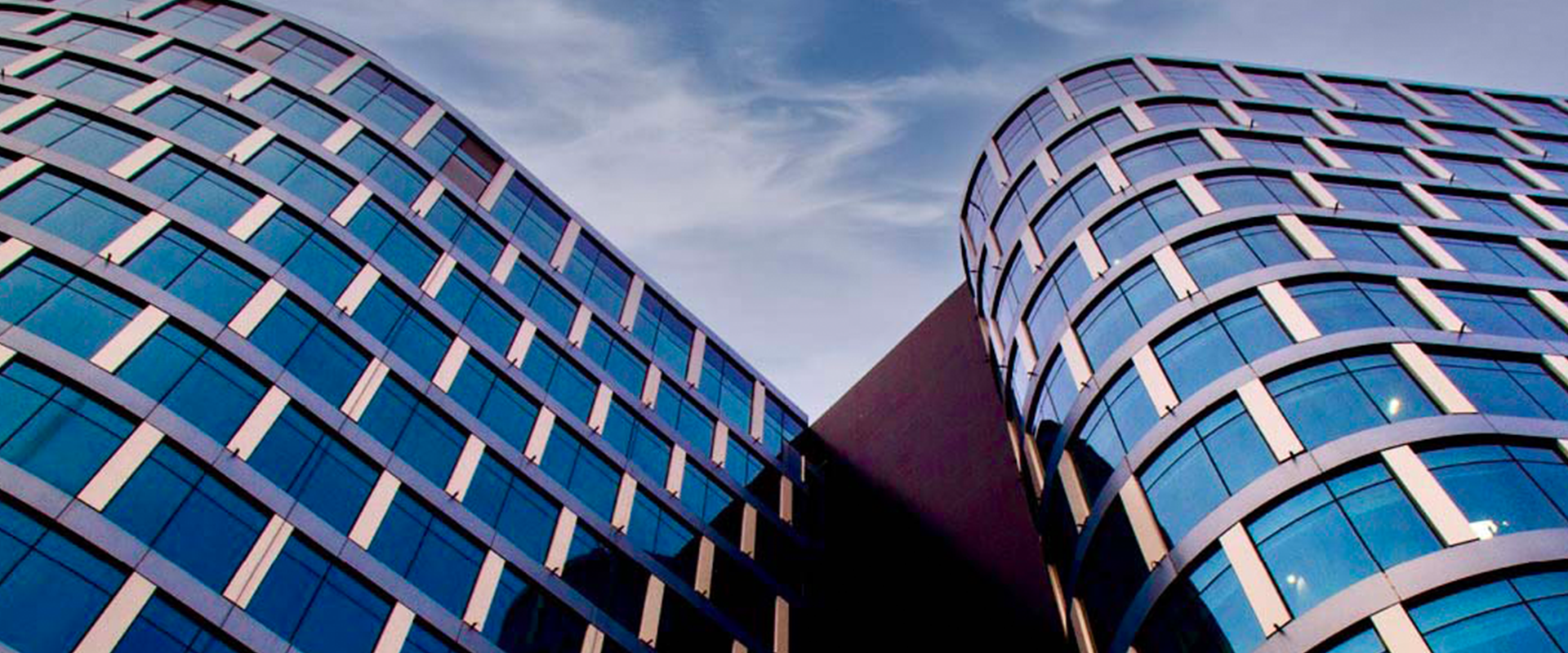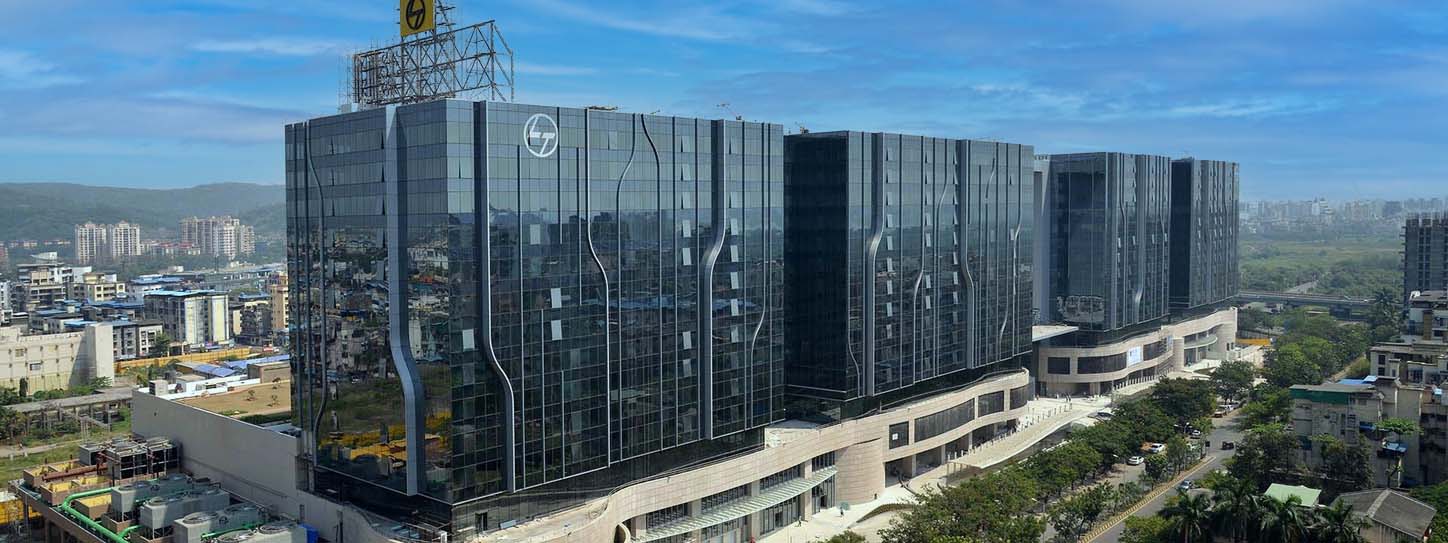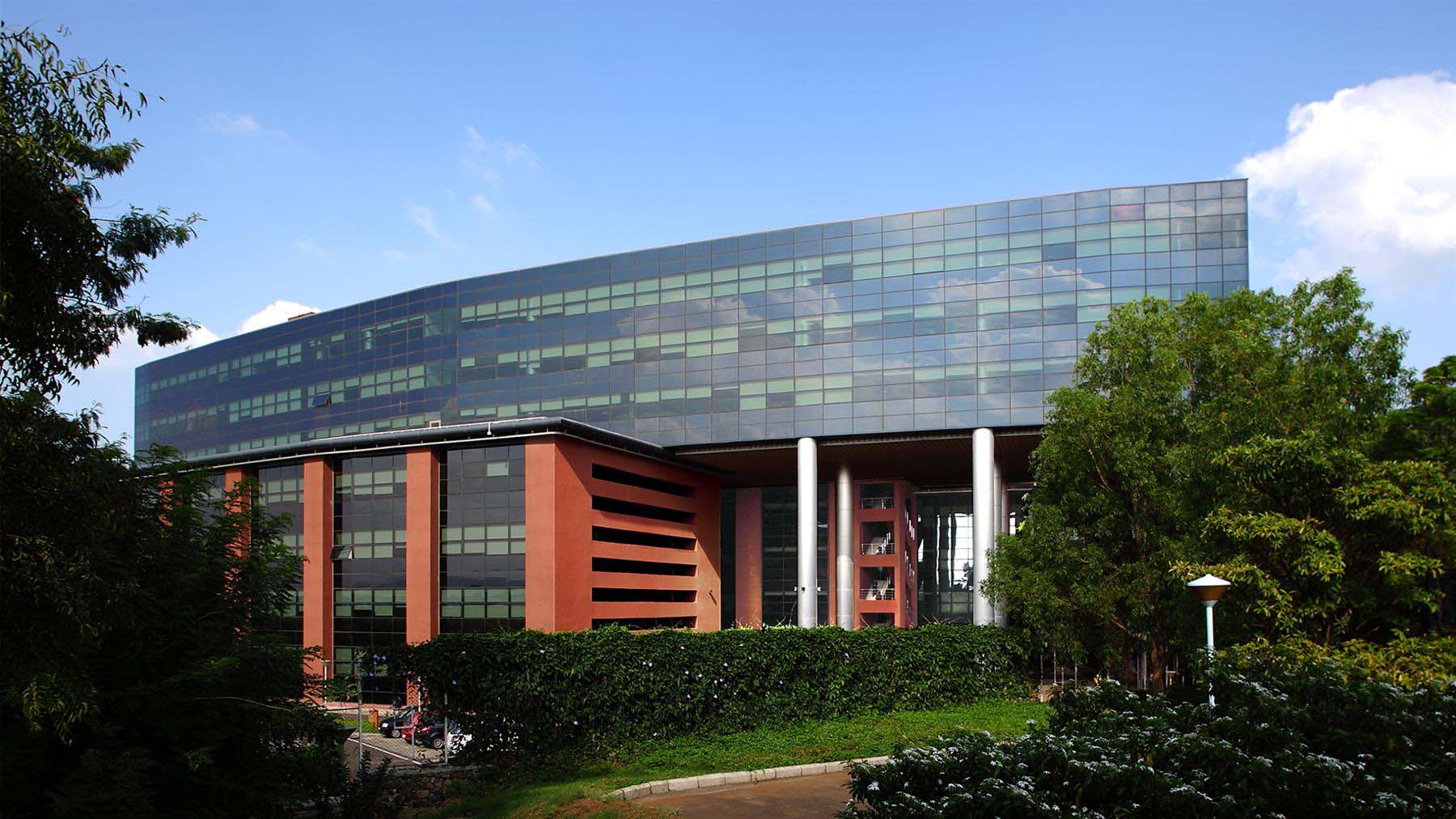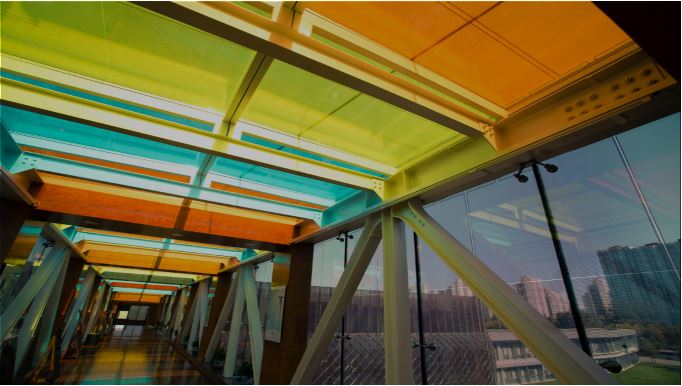Façade glass, also known as curtain wall glass, is a type of glass used in the construction of building facades. It is typically made from either tempered or laminated glass, and is used to enclose and protect the interior of a building while also allowing natural light to enter the space.
Know the benefits for architects and Developer:
There are several benefits of using façade glass for both architects and developers.
- façade glass allows for the creation of a more open and transparent building design. By using large panels of glass in the façade, architects can design buildings with an open and airy feel, allowing natural light to flood the interior spaces. This can not only create a more pleasant and welcoming environment for occupants, but it can also help to reduce the need for artificial lighting during the day, resulting in energy savings.
- façade glass can provide improved thermal performance for a building. Modern curtain wall glass is often coated with a thin layer of material that helps to insulate the building, keeping it cooler in the summer and warmer in the winter. This can help to reduce the energy costs associated with heating and cooling the building, making it more cost-effective to operate.
- Façade glass can also provide improved sound insulation for a building. The use of thick, laminated glass in the façade can help to reduce noise levels both inside and outside the building, making it a more comfortable and peaceful place to work or live.
In addition to these benefits, façade glass can also be used to create a more aesthetically pleasing building design. The use of large panels of glass in the façade can give a building a modern and sleek appearance, making it stand out in a crowded urban landscape.
There are also several considerations that architects and developers must take into account when using façade glass. One of the main considerations is the cost of the glass, which can be significantly higher than traditional building materials. In addition, the installation and maintenance of façade glass can also be more complex and require specialized knowledge and equipment. Finally, the use of façade glass can also present safety concerns, as the large panels of glass can be prone to breakage and may require additional structural support.
Façade glass can provide a number of benefits for both architects and developers. It allows for the creation of open and transparent building designs, improved thermal performance, improved sound insulation, and can also provide an aesthetically pleasing appearance. However, it is important to carefully consider the costs and potential challenges associated with using this type of glass in the building design.
Where can be glass façade used?
Façade glass is primarily used in the construction of building facades, or the outer walls of a building. It is typically used to enclose and protect the interior of the building, while also allowing natural light to enter the space. Some specific uses for facade glass include:
- Exterior walls: Façade glass can be used as a primary building material for the exterior walls of a building, allowing for a more open and transparent design.
- Skylights: Façade glass can be used in skylights to allow natural light to enter the building from above.
- Windows: Façade glass can be used in windows to provide a clear view of the outside while also providing insulation and noise reduction.
- Doors: Façade glass can be used indoors, both exterior and interior, to provide a clear opening while still providing insulation and noise reduction.
- Partitions: Façade glass can be used as a partition material to create separate spaces within a building while still allowing light to pass through.
- Balconies: Façade glass can be used to enclose balconies, providing a clear view of the surrounding area while also protecting occupants from the elements.
In addition to these uses, façade glass can also be used in a variety of other applications, including as a cladding material for buildings, as a screen for outdoor spaces, and as a decorative element in building design.
What are the types of Façades available?
There are several types of façade glass that can be used in building design, each with their own specific characteristics and benefits. Some common types of façade glass include:
- Tempered glass: Tempered glass is a type of safety glass that is treated with heat and chemicals to increase its strength and durability. It is often used in façade glass applications because it is more resistant to breakage than standard annealed glass.
- Laminated glass: Laminated glass is made by sandwiching a layer of plastic between two layers of glass. It is often used in façade glass applications because it is stronger and more resistant to breakage than standard glass. In the event of breakage, the plastic layer helps to hold the glass in place, reducing the risk of injury.
- Low-E glass: Low-E (low-emissivity) glass is a type of glass that is coated with a thin layer of material that helps to reflect heat and reduce the amount of ultraviolet (UV) and infrared (IR) light that passes through the glass. It is often used in façade glass applications to improve the thermal performance of the building.
- Insulated glass: Insulated glass is made by sandwiching a layer of air or gas between two layers of glass. It is often used in façade glass applications to improve the thermal performance of the building.
- Tinted glass: Tinted glass is a type of glass that has a colored coating applied to it, which can help to reduce glare and heat gain in a building. It is often used in façade glass applications to improve the comfort of building occupants.
- Reflective glass: Reflective glass is a type of glass that has a reflective coating applied to it, which can help to reduce glare and heat gain in a building. It is often used in façade glass applications to improve the thermal performance of the building.
- Frosted glass: Frosted glass is a type of glass that has a frosted or etched surface, which can help to diffuse light and reduce glare. It is often used in façade glass applications to provide privacy or to create a decorative effect.
- Patterned glass: Patterned glass is a type of glass that has a pattern or design etched into its surface. It is often used in façade glass applications to provide privacy or to create a decorative effect.
Contact the FG expert team for assistance in finding the ideal glass façade for your next project. They will help you expedite the process and provide you with the best options available.

You might also like
Feb 21, 2022 by TARIQ KACHWALA
Feb 21, 2022 by TARIQ KACHWALA
Feb 23, 2022 by TARIQ KACHWALA










